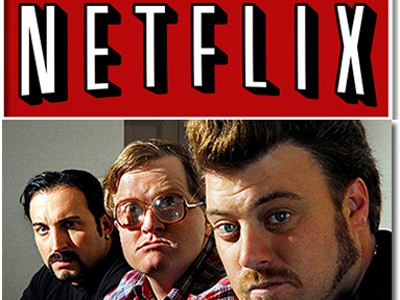
 “Good entrepreneurs will find a way to succeed. There’s an enormous amount of talent in this country, of independent producers that produce great content, on the English side, the French side, or third language. I’m ready to bet that they’ll step up and do great content and those will survive. Does that mean every specialty channel will survive? No, I don’t think so.”
“Good entrepreneurs will find a way to succeed. There’s an enormous amount of talent in this country, of independent producers that produce great content, on the English side, the French side, or third language. I’m ready to bet that they’ll step up and do great content and those will survive. Does that mean every specialty channel will survive? No, I don’t think so.”
This is Jean-Pierre Blais, Chairman of the CRTC, talking to the CBC recently. Hardly the words of a protectionist, anti-choice bureaucrat. And strong words just days in advance of a wide-ranging round of hearings set to start on September 8 and to last until September 19.
His rhetoric should be encouraging to advocates of à la carte channel selection, a.k.a. pick-n-pay. And while those who favour a model in which viewers only pay for channels they actually watch will almost certainly be unhappy with the compromises the CRTC ends up making at the end of their “Let’s Talk TV” consultation process, Blais will definitely be using this coming couple of weeks as his opportunity to move the needle on the touchy subject of giving Canadian TV viewers what they think they want while still upholding the mandate for encouraging the production of Canadian television.
There’s no doubt that online viewing habits and the arrival of Netflix in Canada have been driving the conversation around the future of TV, although some of the potential outcomes of those debates are likely to spin out a few unintended consequences.
You’ve got until September 19 to register your opinion about TV’s future in Canada. Alternatively, you can follow a live audio feed of the proceedings, taking place in Gatineau, starting on September 8.
Stakeholders scheduled to appear, according to the agenda, number almost 120 and range from Google to Telefilm to the National Film Board to the Big Three cable providers to the U.S. Television Coalition to small ISPs like Teksavvy. Overall, it’s an interesting mix of competing interests.
Contrary to what you might imagine about American TV concerns, stakeholders like the U.S. Television Coalition and Disney will not be arguing for unbundling at the hearings, because the wide distribution that comes with bundling channels is the only way to guarantee adequate advertising revenue to invest in new programming.
You’ll notice that there’s no serious talk in the U.S. about pick-n-pay or unbundling. That’s because the economics of unbundling are whacko, the end result of which will be significantly higher bills for viewers. If you think your cable bill is high now, you might want to dig into the numbers around unbundling before you continue to blame the curtailment of your liberty on the fact that you don’t like “paying for” the Recipe Channel.
Issue 10, “Redefining broadcast revenues”, will address over-the-top streaming services like Rogers and Shaw’s new shomi service, and also Netflix.
The CRTC proceedings start their final day, Friday, September 19, with an appearance by a stakeholder who, at first glance, ought not to even be at the table: Netflix.
Netflix? What are they doing there? They’re not even regulated by the CRTC.
They’ll be eager, though, to discuss Issue #10 on the list of 29 issues to be addressed during these hearings. If Issue 10 is approved, Netflix will quickly become a legitimate stakeholder in the Canadian broadcast ecosystem and therefore subject to CRTC regulation.
While pick-n-pay (Issue 2), as well as à la carte programming package selection and innovations like “skinny basic” cable packages are likely to take up a lot of time and attention, it’s worth browsing the other 28 issues.
Number 10, in particular, affects you if you’re convinced that Netflix is on the verge of killing cable. Netflix debuted its Canadian service in 2010 and today counts approximately 4 million subscribers.
Issue 10, “Redefining broadcast revenues”, will address over-the-top streaming services like Rogers and Shaw’s new shomi service, and also Netflix, finally bringing the Los Gatos, California company’s Canadian offering under the jurisdiction of the CRTC and therefore subject to paying into the Canadian Media Fund, and all the other vehicles for the development of Canadian programming.
This is bad news for Netflix (or they’ll portray it as bad news and a rationale for passing the inevitable rate hike on to subscribers). And it’s a mixed bag for the Big Three cable companies. Overall, however, putting a collar on Netflix represents a win for Rogers, Telus and BCE in the sense that it puts Netflix on a level playing field with the cable providers in terms of regulation while also allowing them to count development and programming of online Canadian content as an expense, which they currently aren’t allowed to do.
Note also that a level playing field dramatically favours the Big Three telcos over Netflix, owing to Netflix’s comparatively much smaller margins and the Big Three’s much, much deeper pockets. Netflix will have to find innovative ways to survive, which doesn’t bode well for their future plans getting into producing their own branded original programming.
The telcos, obviously, hate paying into the Canadian Media Fund, especially because Netflix doesn’t have to. And allowing the reallocation of development money to fund online programming allows them to marginalize Canadian programming to the realm of webisodes and other forms of TV for which there’s not a whole lot of demand, relative to broadcast.
Cable and satellite providers, a.k.a. broadcast distribution undertakings (BDUs), contributed $477.7 million to the development of Canadian programming in 2013, $266 million of which goes into the Canadian Media Fund.
This, of course, drives cable companies crazy. Netflix, being unregulated, doesn’t pay a cent into the Canadian Media Fund or any other form of Canadian programming development.
Although the Big Three will likely somehow manage to frame themselves as victims of the phenomenon of cord-cutting and Netflix and having to pay all that money for Canadian content that gets such poor ratings compared to “Big Bang Theory”, they ought to be very happy at the prospect of this proposed “redefinition” by the CRTC.
One has a sense that viewers would not be averse to channel bundling if their bills were lower. As it is, though, it’s quite easy to foment viewer indignation given that the average cable subscriber spends $52 per month for cable, a lot of money for a bunch of channels that never get watched.
And then there are the profits. Revenues from cable TV for Rogers Communications Inc., Telus Corp. and BCE Inc. together totalled $11.2 billion from just over 8 million subscribers in 2012, according to Statistics Canada.
Only Canada’s banks are a more regular focus of Canadians’ ire, simply because of the astounding sums they rake in each quarter.
The cable industry in 2013 actually recorded growth, to 8.8 million subscribers. If the stated objective of cord-cutters, or cord-shavers or whatever it is they’re trying to do to that cord, is to destroy the cable industry, then they’re doing a poor job of it.
In any case, reports of cord-cutting destroying cable in our lifetime are somewhat overstated.
These hearings ought at least to seek to adjust the status quo, which mainly manages to treat people like children while also openly gouging them. So that can’t last.
The “Let’s Talk TV” commission proposes that all rules ratified at the end of this process come into effect by December 15, 2014, which is a pretty quick turnaround for a government commission with a significant impact on the daily lives of Canadians.
Leave a Reply
You must be logged in to post a comment.





 Share
Share Tweet
Tweet Share
Share




Comment